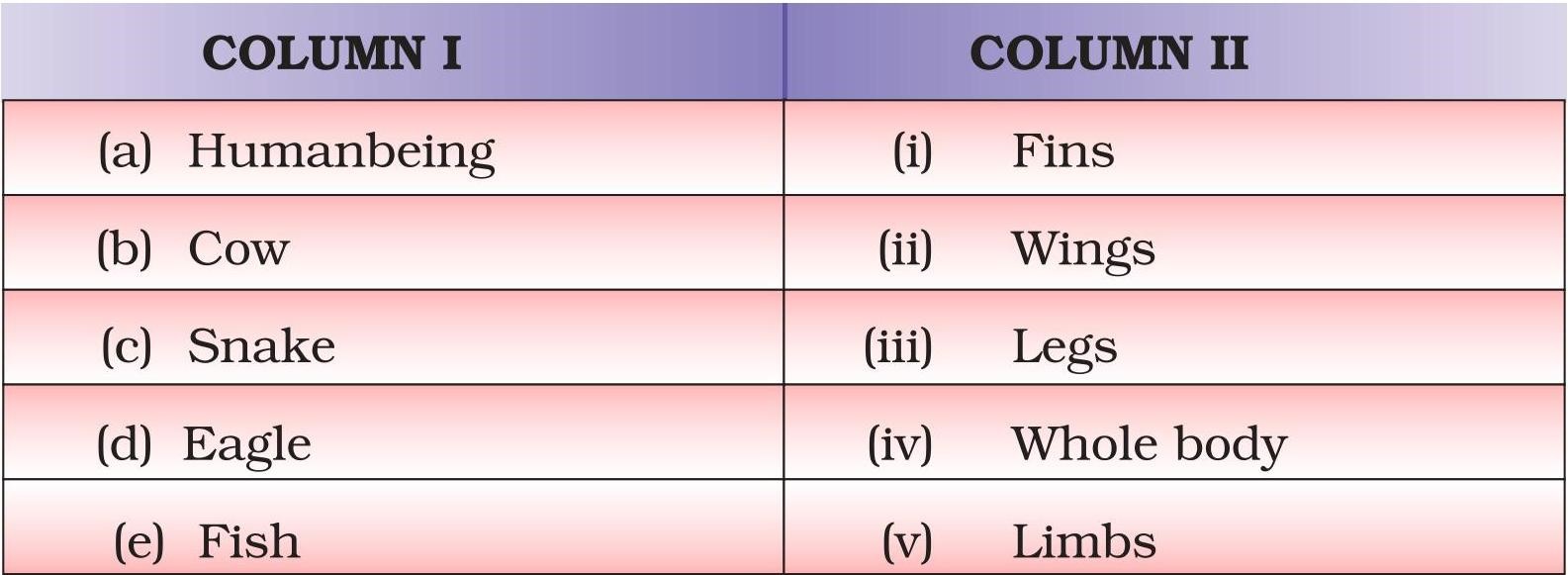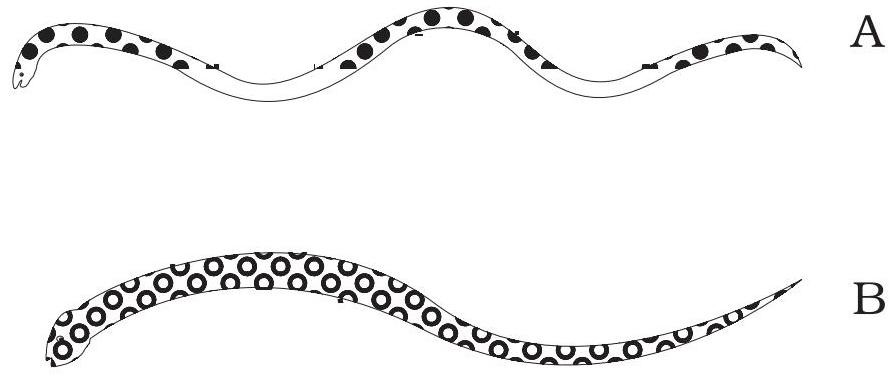Science
(www.olympiadsuccess.com)
Chapter 8: Body Movements
Class-VI
Exemplar Solutions
Multiple Choice Questions
Question 1
Which of the following parts of our body help us in movement?
(i) Bones
(ii) Skin
(iii) Muscles
(iv) Organs
Choose the correct answer from the option below.
(a) (i) and (iii) (b) (ii) and (iv)
(c) (i) and (iv) (d) (iii) and (ii)
Answer
(a)
Question 2
Which of the following joints is immovable?
(a) Shoulder and arm
(b) Knee and joint
(c) Upper jaw and skull
(d) Lower jaw and upper jaw
Answer
(c)
Question 3
Which of the following organisms does not have both muscles and skeleton for movement?
(a) dog
(b) snail
(c) earthworm
(d) human being
Answer
(c)
Question 4
Underwater divers wear fin-like flippers on their feet to
(a) swim easily in water.
(b) look like a fish.
(c) walk on water surface.
(d) walk over the bottom of the sea (sea bed).
Answer
(a)
Question 5
Snail moves with the help of its
(a) shell
(b) bone
(c) muscular foot
(d) whole body
Answer
(c)
Question 6
How many muscles work together to move a bone?
(a) One
(b) Two
(c) Three
(d) Four
Answer
(b)
Very Short Answer Questions
Question 7
Name the type of joint of your hand which help you to grasp a badminton racquet.
Answer
Hinge Joints
Question 8
What would have happened if our backbone was made of one single bone?
Answer
If it would have been so then we would have not been able to bend down from our waist.
Question 9
Provide one word answers to the statements given below.
relaxation.
backbone at the other end.
the abdomen.
Answer
Question 10
Write the type of joint which is used for each of the following movements:
(a) A cricket bowler bowls the ball.
(b) A girl moves her head in right and left direction.
(c) A person lifts weights to build up his biceps.
Answer
(a): Ball and Socket Joint
(b): Pivotal Joint
(c): Hinge Joint
Short Answer Questions
Question 11
Match the name of the animals given in Column I with its body parts used for movement given in Column II.

Answer
(a) - (iii)
(b) – (v)
(c) – (iv)
(d) – (ii)
(e) – (i)
Question 12
Given below is a list of different types of movements in animals.
Running, Jumping, Walking, Slithering, Crawling, Flying, Swimming, Creeping
Write the types of movements seen in each animal.
(a) Duck (b) Horse
(c) Kangaroo (d) Snail
(e) Snake (f) Fish
(g) Human beings (h) Cockroach
Answer
Question 13
Boojho fell off a tree and hurt his ankle. On examination the doctor confirmed that the ankle was fractured. How was it detected?
Answer
The Doctor must have observed a swelling in the ankle and would have taken a X-Ray of the ankle. X-Ray images confirms injuries/fractures in bones.
Question 14
Bones are hard structures and cannot be bent. But, we can still bend our elbow, knee, etc. How is this possible?
Answer
Elbow and knee are not made up of a single bone, but of two or more bones which are joined to each other by a joint (Hinge joint). This joint along with the muscles help us to bend the elbow and knee.
Question 15
Which type of movement would have been possible if
(a) our elbow had a fixed joint.
(b) we were to have a ball and socket joint between our neck and head.
Answer
(a) : We would have not been able to fold/bend our arms.
(b) : We would have been able to rotate our head 3600.
Question 16
Earthworms are known as ‘farmer’s friends’. Why?
Answer
An earthworm eats its way through the soil. Its body excretes the undigested materials that makes the soil fertile.
Long Answer Questions
Question 17
(a) Unscramble the jumbled words and write them in the blank spaces provided.
(i) neosb (v) arctigeal
(ii) tnemevom (vi) epahs
(iii) iontcaronct (vii) sangro inerlan
(iv) lsecsum (viii) laxaeriont
(b)Read the following paragraph and fill in the blanks using the words you unscrambled.
______(a)______ and ______(b)______ form the skeleton of the human body.
They provide the framework, give ______(c)______ to the body and help in
______(d)______ They protect the ______(e)______ The bones are moved by
alternate ______(f)______ and ______(g)______ of two sets of ______(h)______
attached to them.
Answer
(a): (i) bones
(ii) movement
(iii) Contraction
(iv) muscles
(v) cartilage
(vi) shape
(vii) internal organs
(viii) relaxation
(b): (a): bones
(b): cartilage
(c): shape
(d): movement
(e): internal organs
(f): contraction
(g): relaxation
(h): muscles
Question 18
How is the skeleton of a bird well-suited for flying?
Answer
The reason behind it is listed as below:
Question 19
In the following figure there are two snakes of the same size slithering on sand. Can
you identify which of them would move faster and why?

Answer
A snake forms loops in its body while slithering. Each loop of the snake gives it a forward push by pressing against the ground. The snake with a large number of loops moves much faster than the snake with less number of loops. Thus snake "A" will move faster than snake "B".
Yearlong program for Olympiads preparation & to build necessary skills for future.
Explore More
Time to mark your calendar with the upcoming Olympiads exam schedule.
Explore More
Take your Olympiad preparation to next-level by taking LIVE Classes.
Explore More
Assess your performance by taking topic-wise and full length mock tests.
Explore More
Online tuitions for international compeitions like SASMO, SEAMO, etc for Grades 1-11.
Explore More